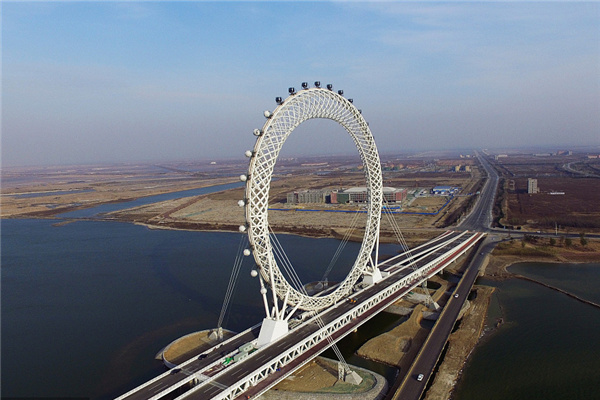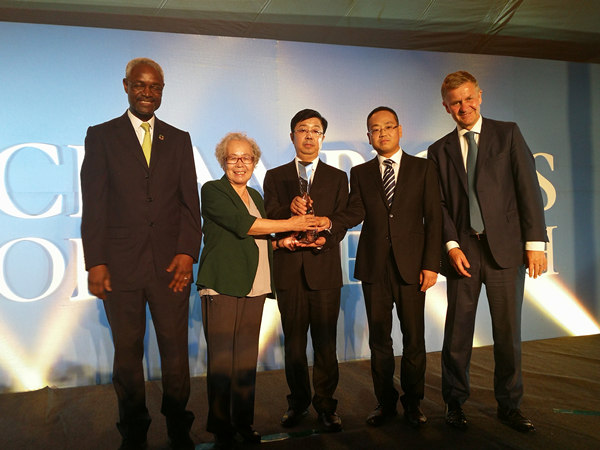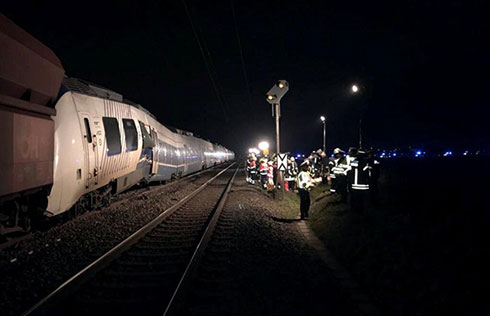

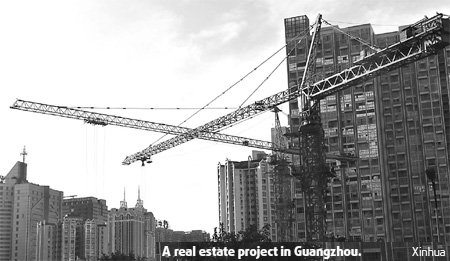
China's July data release points to continued economic recovery in the second half of this year, led by strong government-backed investments. The surge in bank credit in the first half provided the funds needed for investment growth, but has also generated concerns about the risk of rising inflation, non-performing loans and potential asset bubbles.
Jing Ulrich, chairman of JP Morgan Security China, recently discussed China's July economic data with China Business Weekly.
Alleviating market concerns about the possibility of policy tightening, Chinese officials have emphasized they will maintain an active fiscal policy and moderately loose monetary policy while fine-tuning measures to guard against asset bubbles. With the global recovery unlikely to be smooth, she said domestic demand is likely to remain the primary engine of growth for the remainder of 2009.
Q: What is your perspective on consumer prices and producer prices in coming months?
A: China's Consumer Price Index (CPI) declined by 1.8 percent year-on-year in July, from a negative 1.7 percent in June. The Producer Price Index (PPI) fell by 8.2 percent year-on-year in July, from a negative 7.8 percent a month earlier.
July CPI and PPI figures mark the sixth and eighth consecutive months, respectively, in deflationary territory. Despite recent deflation, prices should begin to rise later in the year with the continued recovery in the domestic and global economies.
China's recent inflation readings haven't captured the surge in asset prices, which have been an important factor behind monetary policy decisions in recent months.
Authorities want to sustain the economic recovery without triggering a round of asset price bubbles and spiraling inflation.
Producer prices have been falling for months, but there are some signs of a price up-tick for key industrial commodities. Chinese spot steel prices have reached the highest level since last October, with prices for hot-rolled sheet up 31.9 percent since mid-April, wire-rod up 41.9 percent and steel plate up 30.2 percent.
Continuing the trend, China's major steel mills are hiking their offer prices for August and September.
The input price components of China's two manufacturing PMI series are on the rise. The CLSA-PMI input price reading jumped to 59.1 in July from 49.8 in June -- the first monthly expansion since September 2008.
The official NBS-PMI input price reading increased to 59.9 in July from 57.8 in June. Upstream raw material price increases are unlikely to filter rapidly to the retail level because of overcapacity in China's industrial sector.
Under the National Development and Reform Commission (NDRC)'s new refined products pricing mechanism, retail prices for gasoline and diesel fuel were raised 9 percent and 10 percent, respectively, on June 30 - the third successive increase since March.
In response to the pullback in global crude prices earlier in the month, retail prices for gasoline and diesel were subsequently cut by approximately 3 percent each on July 29.
In a recent report, the statistics department of the People's Bank of China projected that CPI would bottom at the end of the third quarter. Strength in domestic demand, relatively high levels of liquidity and rising global commodity prices are expected to add to inflationary pressure in coming months.
New loans rose to 1.53 trillion yuan in June, bringing aggregate new lending in 2009 to 7.37 trillion yuan, up 201 percent year-on-year from the first half of 2008.
Global commodity prices have rebounded off the 12-month lows of early March and have recovered from their recent pullback in early July.
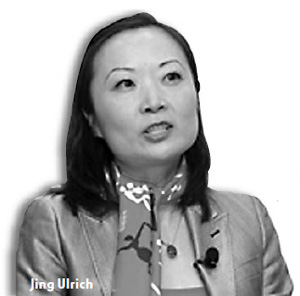
While China's CPI should begin to rise later in the year, price inflation should be moderate, since producers and consumers alike will continue to feel the effects of industrial over-capacity and unemployment for some time to come.
Q: Will fixed asset investments continue to drive the economy as a major GDP contributor?
A: China's fixed asset investments (FAI) increased in July, with FAI growing 32.9 percent year-on-year in the first seven months of 2009, compared to 33.6 percent growth from January through June.
It comes as no surprise that fixed asset investments, fueled by the government's stimulus package, have become the most important contributor to China's GDP growth. Gross capital formation -- the definition of which includes components of FAI -- contributed 6.2 percentage points to China's 7.1 percent real GDP growth in the first half of this year, helping to offset the effect of negative net exports.
An expenditure of 400 billion yuan is expected in the second half. The buoyant pace of infrastructure expansion is in turn supporting FAI in manufacturing, particularly in the materials and specialized equipment industries.
Heavy spending on infrastructure will continue in coming months, since a significant amount of the record new loans created in the first half of 2009 has yet to be deployed.
Competing to lend to government-backed infrastructure projects, banks have front-loaded loans prior to project starts.
Despite some policy adjustments to curb excessive demand, we expect the government to remain supportive of the housing market recovery, given the importance of private investment to China's economic growth. Real estate investments accounted for 22.2 percent of FAI in the first six months of the year.
With property transactions recovering in the first half and property prices returning to positive year-on-year growth, the China Banking Regulatory Commission has urged banks to strictly follow criteria for granting second home mortgages.
According to the NDRC, new home prices in 36 Chinese cities rose 6.3 percent year-on-year in June.
Banks in some cities have started tightening mortgage-lending terms for second homes, enforcing a policy that requires a minimum down payment of 40 percent and an interest rate 10 percent above the base-lending rate.
However, even with stricter mortgage policies in some cities, land prices in the first two weeks of August surpassed levels last seen in 2007. Strong sales and reduced inventory have prompted developers to ramp up the pace of construction and replenish their land banks.
Q: Will exports continue to fall in coming months?
A: China's exports contracted by 23 percent year-on-year in July, from negative 21.4 percent in June. Imports fell by 15 percent year-on-year in July, compared to negative 13.2 percent in June. China's monthly trade surplus expanded to $10.6 billion, up from $8.25 billion in June.
The softness in external demand has resulted in a greater reliance on investments as a driver of China's economic growth.
According to the National Bureau of Statistics, real GDP growth was up 7.1 percent in the first half of 2009, with gross capital formation contributing 6.2 percentage points, consumption 3.8 percentage points and net exports negative 2.9 percentage points.
The forward-looking "new export orders" components of China's manufacturing PMI series indicate initial recovery in export demand.
The official NBS-PMI registered new export orders of 52.1 in July, the third consecutive month of expansion. The CLSA-PMI registered new export orders of 50.2 in July, the second consecutive month of expansion.
Improving economic activity has yet to translate into a convincing recovery in China's container traffic. Throughput performance at major ports was somewhat mixed in July, with Shanghai showing improvement and Shenzhen remaining weak.
Container throughput at Shanghai declined 9 percent year-on-year in July and increased 7 percent month-on-month. Shenzhen declined 23 percent year-on-year in July and increased 4 percent month-on-month (seasonally adjusted).
The provincial trade bureau of Guangdong province, home to many of China's export manufacturers, recently announced that exports from the region were showing signs of recovery. While provincial officials expect year-on-year declines in the third quarter of 2009, they expect to see export growth in the fourth quarter of 2009.
Recent improvements in China's port throughput data have reflected increasing imports of bulk commodities. According to earlier Ministry of Transport data, imports of iron ore continued at a robust pace in July to reach 56.5 million tons, which is a 35 percent year-on-year increase (or a 2.2 percent rise from a month earlier).
This represents the second-highest monthly level and indicates strong demand from Chinese steel mills, as they benefit from the revival in downstream industries ranging from infrastructure and property to automobiles and appliances.
(China Daily 08/24/2009 page2)


